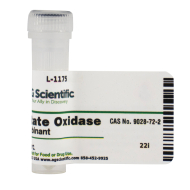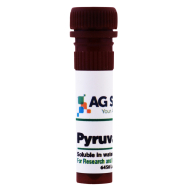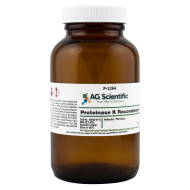Lab-on-a-chip (LOC) technology is a category of research microdevices that automate several lab techniques in one chip; in this case a chip typically measured at a few square centimeters.
In addition, currently on trend are nanomaterials such as carbon nanotubes (a popular choice due to the chemical stability and strength of the material), used in the construction of many microfluidic LOCs, for example, biosensors (research devices which use biological materials to detect analytes).

LOCs are able to be designed in order to conduct chemical/biochemical analysis on such a small scale that it dramatically reduces the amount of reagents needed. Refer to this article on a biosensor design using carbon nanotubes that is about half the size of a modern cell phone!
Lab-on-a-chip devices also allow for chemical and biochemical applications to be conducted with minimal risk and exposure to the researcher, not to mention increasing speed and efficiency of experimentation.
Trend to Watch: Carbon Nanotubes
Let’s dive deeper into carbon nanotubes; the current nanomaterial of choice in building microtechnology such as microfluidic lab-on-a-chip devices. Cylindrical in shape, composed of condensed single layer carbon atoms, carbon nanotubes are incredibly strong molecules that can be used as strong conductors for thermal and electrical energy.
Carbon nanotubes are ideal in the creation of lab-on-a-chip devices because they are thermally stable molecules, which moderate the amount of heat produced in a lab-on-a-chip devices. This is good news for researchers, because overheating is one of the largest setbacks in LOCs. If a chip overheats, its performance will slow until it is ineffective. The addition of carbon nanotubes is a good way to moderate this reaction. A specific type of chip technology, the microfluidic LOC, tests a small amount of liquid matter for precise outcomes in research. Microfluidics are used in experiments in cell biology research, genetics, understanding liquid compounds, and more. And carbon nanotubes have played a big role in detecting the presence of certain cells and molecules.
Carbon nanotubes are found to yield increasingly positive results when used in microfluidic chips--for example, in the early detection of cancerous tumor cells.
Researchers at Worcester Polytechnic Institute (WPI) in Massachusetts have created a chip where antibodies connected to carbon nanotubes. When blood is dropped onto the chip, the antibodies will pull down heavier cancer cells to attach, so researchers can isolate and target these specifically.
Ionophores and Enzymes for Biosensor Applications
Lab-on-a-chip devices require smaller quantities of reagents, and this good news for project budgets! If we look at biosensors, the two categories of reagents used in research are typically ionophores and enzymes.
Ionophores are chemical compounds which bond to ions and carry them through cell membranes. They also are lipid-soluble, making it so that the bond can be reversed.
Through this process of transporting ions, ionophores can change the composition of cells along with activating or altering many other cellular processes.
Take for example magnesium ionophores I and III, two reagents we stock which are used most commonly in ion-selective electrodes(ISEs). These reagents are used in many different industries to ensure that there is an acceptable level of metal in varying substances. See more about ion-selective electrodes here.
Enzymes on the other hand are proteins used in order to target and locate an underlying substance. They are also used to remove substances which interfere with the chemical/biochemical reaction being analyzed.

Enzymes are also catalysts, meaning they speed up the chemical reaction being observed through energy of activation.
All reagents need to be activated for experimentation, and that requires energy. Enzymes reduce the amount of activation energy needed by binding to the present substrates. This makes the reaction more likely to happen, making observation easier to do.
An applicable enzyme to many food and beverage industries is lactate oxidase. This enzyme is used as a mechanism in biosensors to test for lactic acid in different food and beverage products. Lactic acid fermentation can mean food is spoiled or contaminated, so it is vital to be able to measure this to ensure the quality of products.
In order to measure the amount of lactic acid in testing phase, lactate oxidase is used in a biosensor in order to catalyze the reaction.



